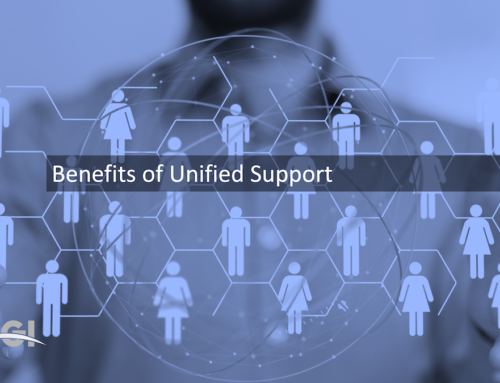Historically speaking, depending on which silo you are in determines your viewpoint of how we carry out protection responsibilities. If you are an Executive Protection Practitioner, your purview is the personal field services. If you’re an Electronic Security Professional, you may feel you can accomplish the needs of protection without an abundance of human interaction. We all have different viewpoints regardless of the position.
Before we get into the need for synergy within the GSOC, we first need to understand the ingredients of a Global Security Operations Center and each component’s responsibilities.
Command Center vs. Security Operations Center
A Security Operation Center (SOC) is a centralized function within an organization employing people, processes, and technology to continuously monitor and improve an organization’s security posture while preventing, detecting, analyzing, and responding to threats and vulnerabilities. In real-time, operators provide operational services in communication, monitoring, and response to access requests and incidents. For a SOC to be a Global Security Operations Center, it must be able to function worldwide.
The GSOC is often confused with a Command Center, even among GSOC operators, and is a pitfall for many, meaning operators often feel they call the shots as a leader vs. a partner within the process. Unlike the GSOC, the Command Center does not participate in routine operations and is a central location for management responsibilities. Often the Command Center resides within or adjacent to the GSOC with differing responsibilities of the GSOC itself. The Command receives processed information to develop decisions in creating orders then communicated to the security function.
Emergency Operations Center
Another form of an operational center is the Emergency Operations Center or EOC. The EOC switches on when critical emergencies arise and then switches off when the incident subsides. It is commonly created for and used by organizations and government agencies that do not require a full-time Op’s Center.
Mobile Operations Center and Virtual Operators
Major events might necessitate a Mobile Security Operations Center when the center’s workflows are focused on a local acute event.
The current trend is the Virtual GSOC allowing in-house and third-party analysts and operators to perform their roles remotely. In 2020 this need is more evident with the ongoing COVID crisis.
Inclusive and Well Rounded
The parts of an appropriate GSOC should be inclusive of all concerns as the function of each is critical. The abilities and reach of the GSOC are limited only by funding, knowledge, and assessed organization needs.
Communication
Operational
Intelligence
Network Security
Communication
Program-wide communication is essential to the protection of physical and human assets. The GSOC or Command Center looked at an “Enterprise-wide” solution and did not adequately account for all protection scenarios, such as travel, work, residential, family, and events.
Communication Components
- Intercoms
- Telephone Networks
- Incident Communications
- Incident Reporting to the GSOC
- Individual and Mass Notifications
- Two-way Communications with Security Personnel
Operational
The global security program’s operational components have moved from performance exclusively within the field to the GSOC utilizing virtual protection systems.
Operational Components
- Coordination and Support to Field Services
- Video and Alarm Monitoring
- Logistical and Resource Coordination
- Remote Access Controls
- Real-time Global Tracking
- Managed Facility Services
Intelligence
The drive behind all protective operations is assessing and managing risk—collecting, evaluating, and disseminating information to the team of activities posing threats to or the vulnerabilities of an asset, making intelligence the driver of the GSOC.
Intelligence Components
- Open and Closed Source Monitoring
- Information & Behavioral Analysis
- Surveillance
- Investigations
- Due Diligence
- Planning
Network Security
Network Security encompasses the monitoring and examining internal and external network traffic, hardware, software, databases, websites, and manages firewalls. GSOC’s manned by IT Security provides 24-hour response to attacks or discovered vulnerabilities.
Network Security Components
- Asset/Device Tracking
- Behavioral Monitoring
- Compliance
- Defense System Maintenance
- Incident Alert & Response
- Activity Logging & Investigation
Synergy and Flow
Synergy, for my purposes, “a mutually advantageous conjunction or compatibility of distinct business participants or elements (such as resources or efforts).”
The flow of protective responsibilities is fluid when we are inclusive and put forth team cooperation. “Combined effect is greater than the sum of separate effects and efforts.” The team should consist of each arm of the protection mission. Trust is paramount to an overall successful mission and developed through practical training and experience as a working team.
Personnel within the field need a thorough understanding of the SOC, and each position’s purpose within the SOC holds. An Executive Protection Practitioner needs to know and understand their resources and be willing to utilize these resources. Too often, the Practitioner looks to help as an afterthought vs. forethought in their original plan. The “I have to do it myself” overtakes the cooperation.
The SOC Operators filling various roles must understand the needs of those they support, be it Executive Protection Practitioner, Corporate Resource Officers, Security Drivers, or Residential Security Officers- and of course, the community they serve.
Mission-Based
Resources and efforts should focus on the mission’s goals in protecting human and physical assets, falling under their responsibility. When mission goals are shared, we remove the walls that divide our responsibilities.
When we sit in the same room, it provides a venue for like-minded thinking and constructive processes in providing the best protective practices that add value to the business or people we serve beyond security- it creates synergy across a larger spectrum.
About Bill Peeler
Bill Peeler, the driving force behind Peeler Group International, reflects on a career nearing four decades, committed to protecting individuals and institutions worldwide.
While recognized as a stalwart in security, he attributes his success to the trust and expertise bestowed upon him by countless clients. With a steadfast dedication to excellence, Bill guides the helm, championing investigative endeavors, delivering exceptional protection services, and sharing invaluable insights through training initiatives.
Preferring to lead by example, his influence extends beyond borders, fostering safety and security amidst an ever-changing landscape.







